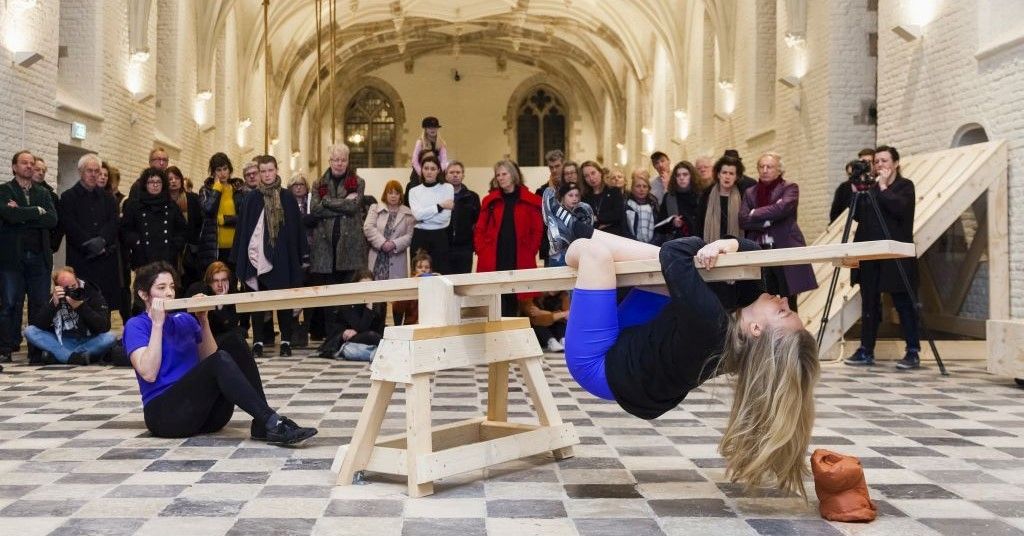
Simone Forti
Some thoughts on Simone Forti’s famous Dance Constructions, recently bought by the MoMA New York, now performed at Vleeshal Markt in Middelburg.
A relationship or partnership between objects and people, models of collaboration between animated subjects and non-animated objects are notions applied to the dancing methodology of Simone Forti.
Her career as choreographer is strongly linked with Minimalism and Arte Povera; both of them provided materials for her improvisation practice. As Virginia Spivey illustrated in her essay ‘The Minimal Presence of Simone Forti’, the artist’s ‘reliance on props and predetermined rules to dictate choreographies’ relates to Minimalist configurations for the production of space and objects. She activated structures as part of her performances by looking at how things relate to each other, instead of focusing only on movements. She eventually established dialogues with sculptures by other artists, eroding the boundaries between sculpture, theatre prop and leftover.
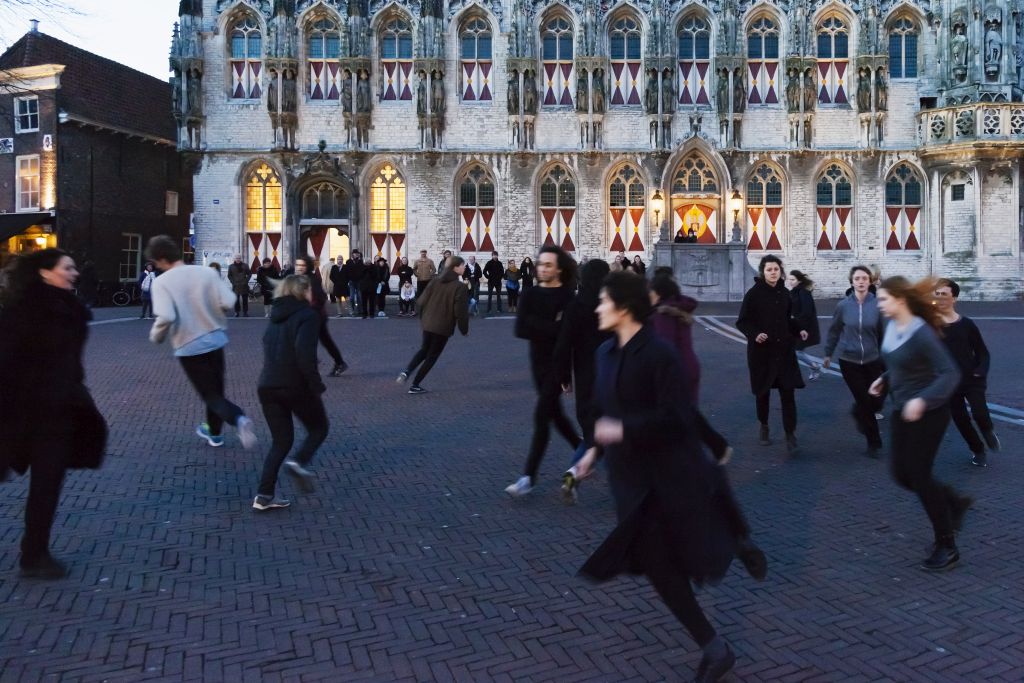
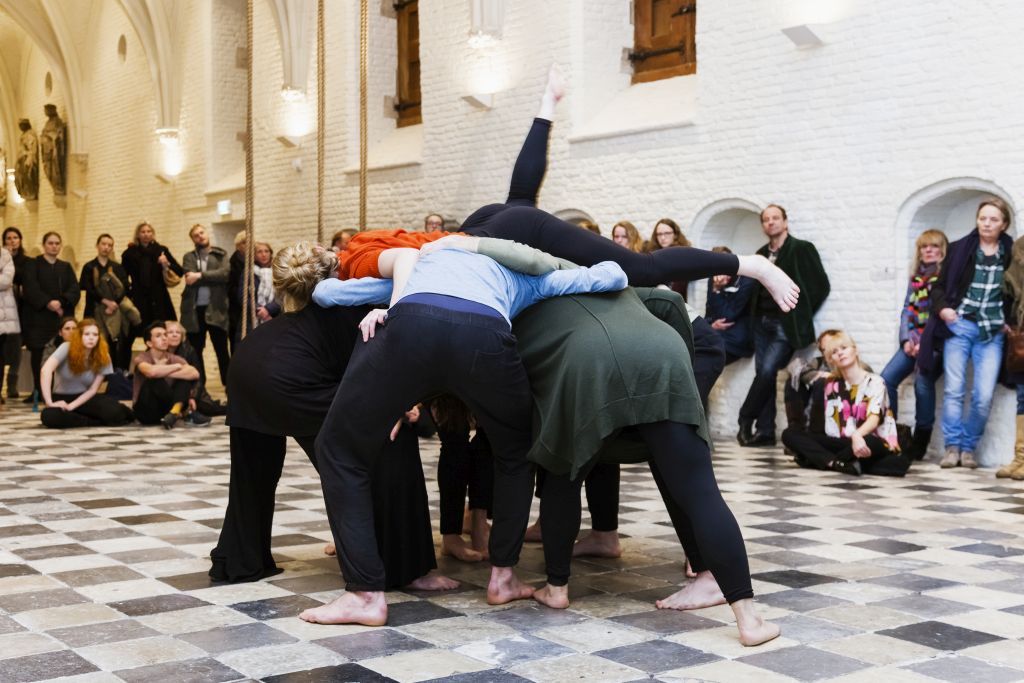
Forti’s solo show Here It Comes at de Vleeshal, Middelburg, composes of two parts: a selection of drawings for her stages, videos and archival materials and the little organic sculpture Onion Walk (1961) on the one hand, and the Dance Constructions (five performances created between 1960 and 1961) performed at a location near the old market square on the other hand. The props for the Dance Constructions create a visual collision with the ancient interior of the Vleeshal where they are installed. Natural wood against a black and white chessboard floor, and whitewashed walls: this contrast enhances differences and defines shapes. The props are arranged in a sequence adapted to the location, implying a new order for the execution of the performances, and a different rhythm for their perception.
A different version of this exhibition has been presented at Index – The Swedish Contemporary Art Foundation in Stockholm, in November 2015. Forti became the focus of attention again after her first big retrospective at Museum der Moderne, Salzburg in 2014, and the recent acquisition of the Dance Constructions by the MOMA in New York.
When an institution acquires or shows a performance, a host of interesting issues arises. Once owned by a museum, a performance will be repeated with the purpose of reaching as much public as possible. Repetition nullifies the moment of concentration at the core of a piece in order to fit the structure of a collection.
In the case of Dance Constructions, due to the fact that they can be performed by non-trained dancers, enough room for the bodies of the performers to adapt and interpret the sequence is left. Still, each re-enactment requires the presence of an authorised trainer. When the Dance Constructions are performed, an open call is made to find executors, often on a quasi-total volunteer base. This clashes with the pictures of their first execution by Forti’s colleagues, in an old attic, when they originated from a spontaneous flow of collaborations.
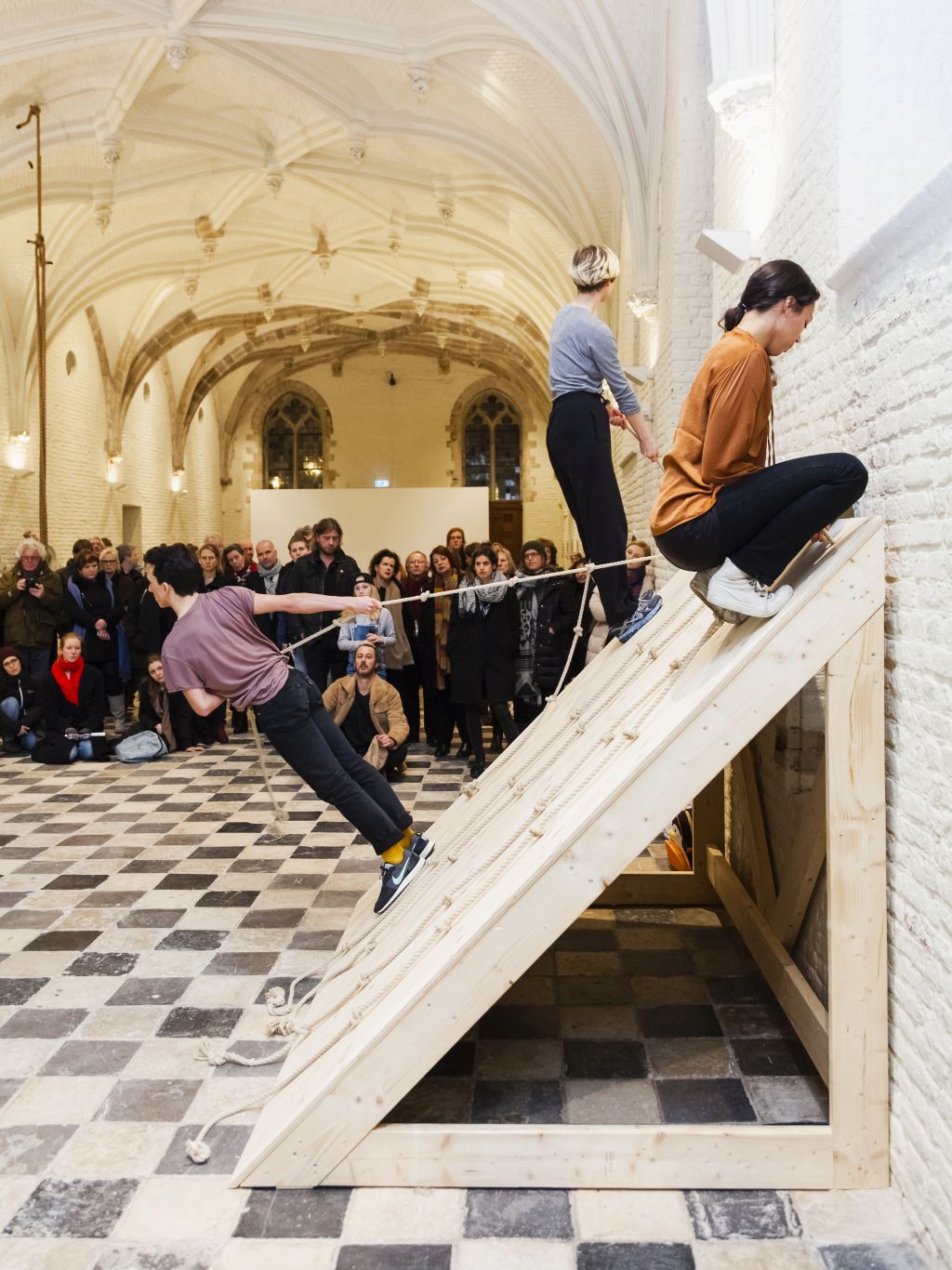
Because this artwork is now part of art history, of the canon of performance art, the balance between perception and experience has shifted. There is less space for interaction and spontaneous participation by the audience, which creates an objectification of the performers and the piece itself. The outcome is now an intense contemplation, instead of a live example of actions, which could also be experienced.
The exhibition in Middelburg takes these issues into account and connects historical documentation, background information about Simone interests and influences, together with a live rendition. This occasion also gets back to a former presence of Simone Forti in Middelburg: the festival De Dans Voorbij from 1980, and it is an exceptional possibility to see all of the five Constructions in a unique venue.
A new version of her performance See-Saw has been especially commissioned for this occasion, offering a valid example of dealing with performance re-enactment. The artists are Maragaux Parillaud and Mie Frederikke Christensen recently graduated at the Rietveld Academy. Their interpretation of the performance enacts a relationship with the see-saw filled with acts of passive aggression alternates to cooperation. It was visible during the opening and will be repeated on the 28th of March.
The first time See-Saw was performed it was at Reuben Gallery in 1960, with Simone Forti doing the lights and singing a song she had once heard on a record. The song was about a man running in a sun-baked desert and bumping into a buffalo and an Indian, while his legs went tired and sore. Simone also witnessed the performance and described it as simple as it was: ‘The beginning of the See-Saw was signalled by the light going off and on at intervals of about six seconds. The man, Robert Morris, appeared in a black coat, carrying the saw-horse, went back for the plank and set up the see-saw. […] The woman, Yvonne Rainer, also appeared wearing a black coat. Both took off their coats, revealing red sweaters and shorts. […] For a long time they simply see-sawed up and down. Then they did several combinations of movements, which shifted the balance. The possibilities are endless, for the whole structure of plank and performers rests on one point, making its equilibrium as sensitive as a pair of scales. […].’
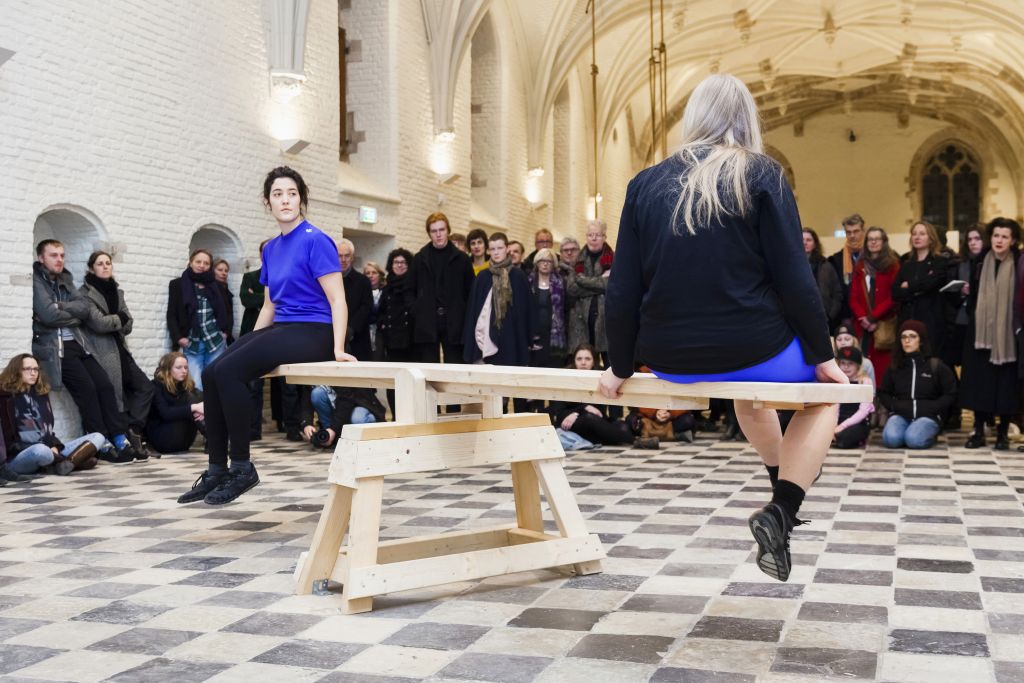
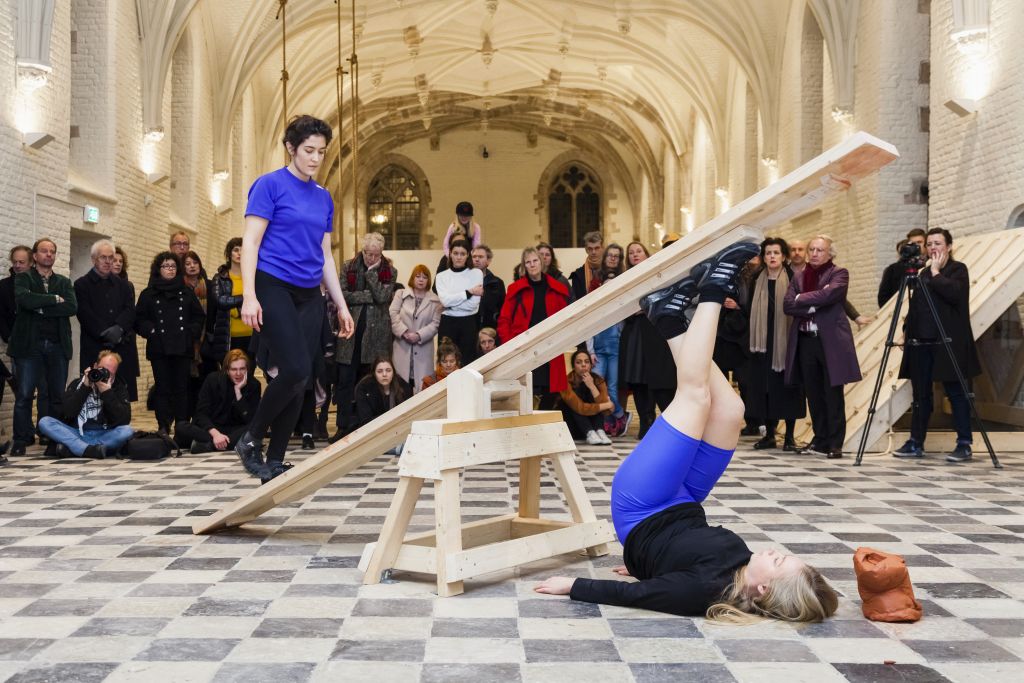
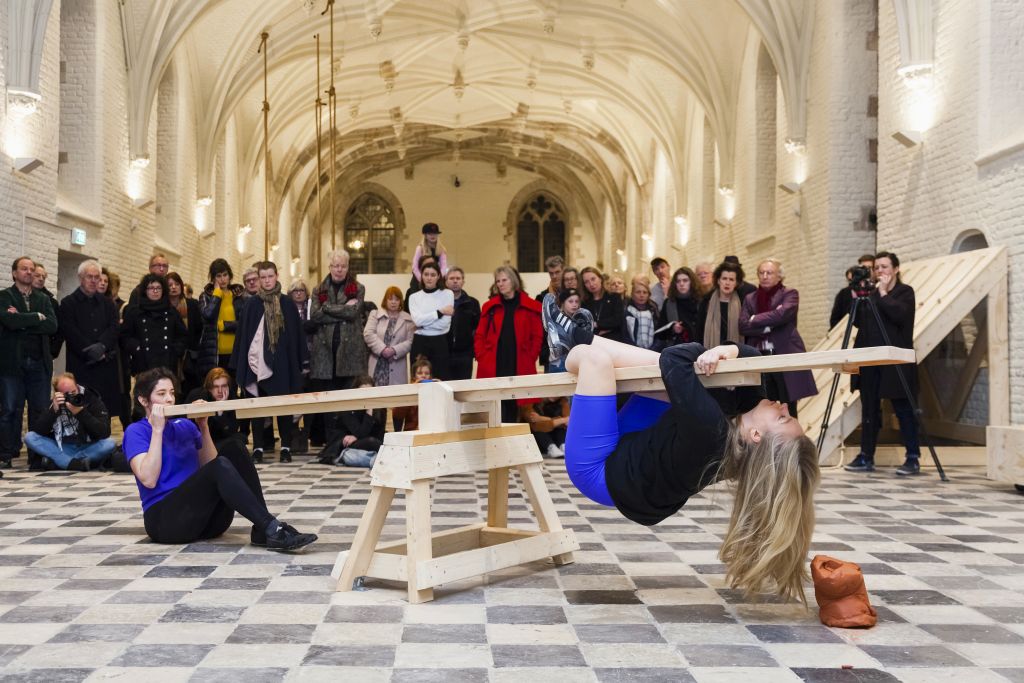
Forti describes in her Handbook in Motion the genesis of these pieces. It all started in the late spring of 1961, when La Monte Young asked her do to an evening at Yoko Ono’s loft in Chambers Street. She has a memory of herself sitting on the bed one afternoon with a piece of paper in her lap, drawing sketches for what she called ‘five dance constructions and some other things’. The original sequence was slightly different from the current composition, but the execution is based on the same original descriptions, functioning as instructions.
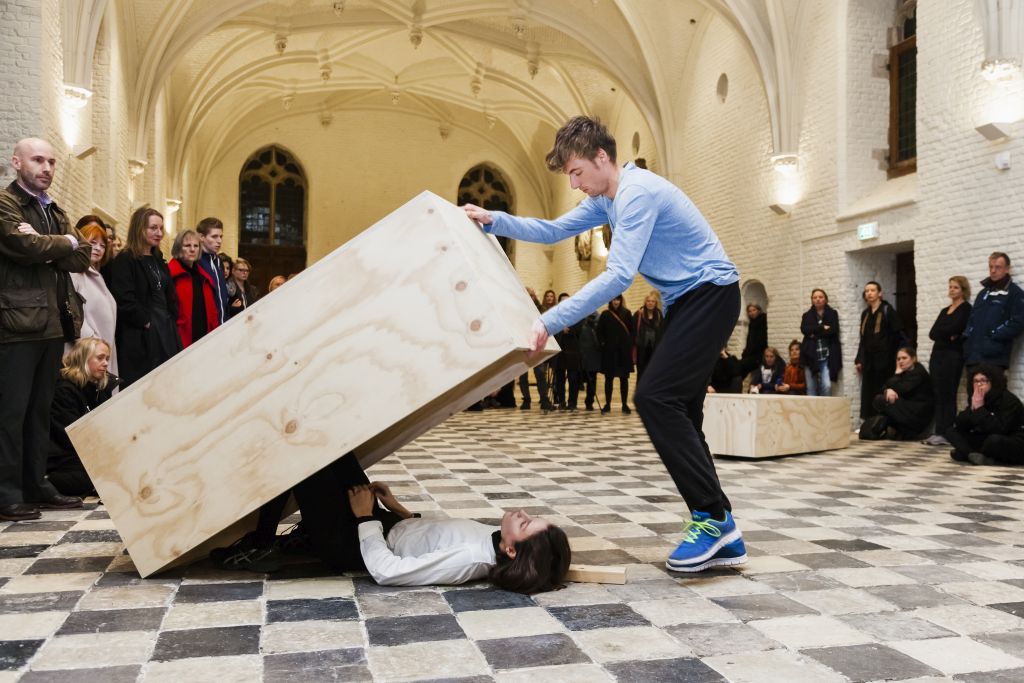
This specific presentation of the Dance Constructions lasts about one hour, and follows a sequence, which is inspired by the original floor plan done for the Yoko Ono’s space. The day of the opening of Here It Comes, the entire group of performers started to run in disorganised circles on the market square, at dusk, as a warm-up. They all entered the Vleeshal where eight people start to assemble to create the work Huddle. They gather in a circle and get closer and closer, until they have to rely on each other in order to maintain balance. They seem to transform into an object: an upside-down nest, a bunch of woods piled together to make a fire…
Huddle reminded me of a metaphoric way of exercising a system of interdependency, a micro simulation of co-existence. In the same historical period when it was created, other propositions for visualising utopian communal living, like New Babylon by Constant Nieuwenhuys or Cluster City by Allison and Peter Smithson were launched. This piece speaks to architecture from a conceptual perspective, without including any sculptural props like all the other Constructions do.
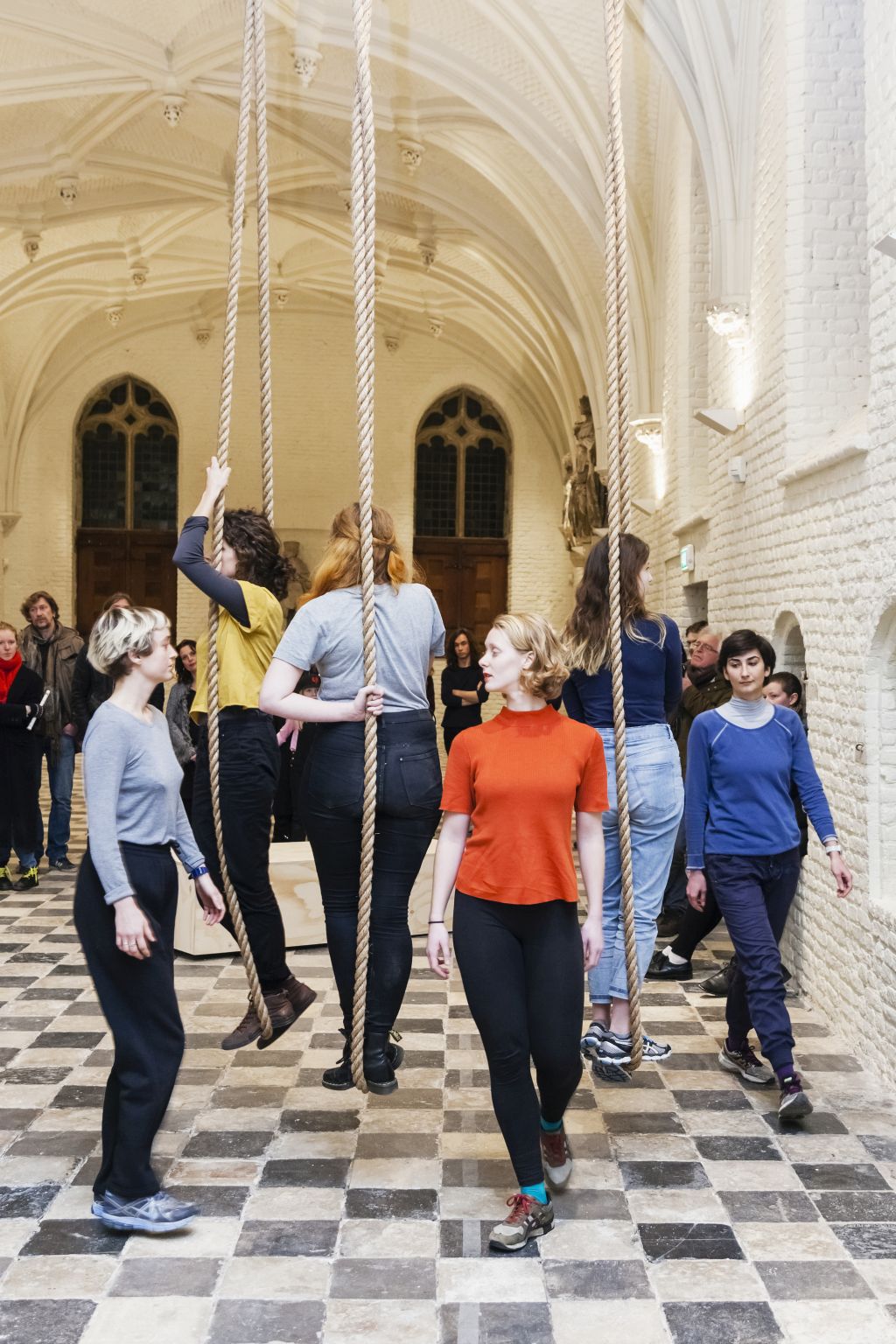
Then follows the piece Slant Board which is more about vertical action. It consists of climbing a ramp by using ropes attached to it. The sound of the ropes falling on the wooden board creates a rhythmic dynamism, accompanying the sharp movements of the performers. Every time a performer is tired, he or she can rest and use the rope for this purpose; this makes the climbing resemble a calm challenge.
Platforms is a delicate whistling duet performed by a man and a woman, hidden inside two crates of different dimensions, positioned a few meters from each other. They communicate with gentle sounds, which resonate from inside the crates that function as amplifying chambers. At the end of the piece the man exits his crate and helps the woman to get out from hers.
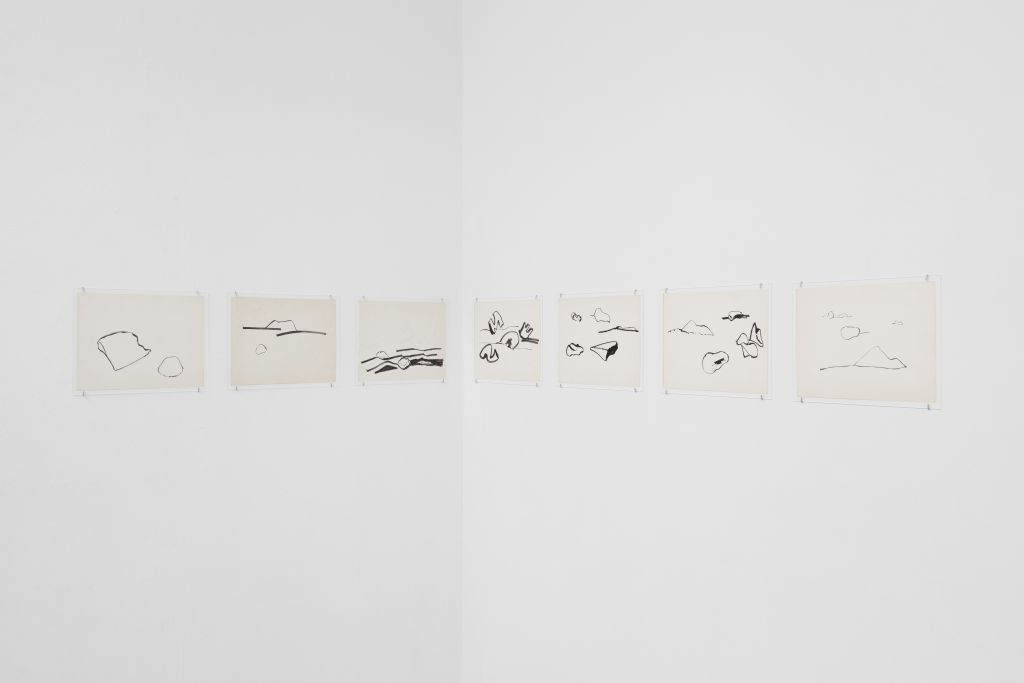
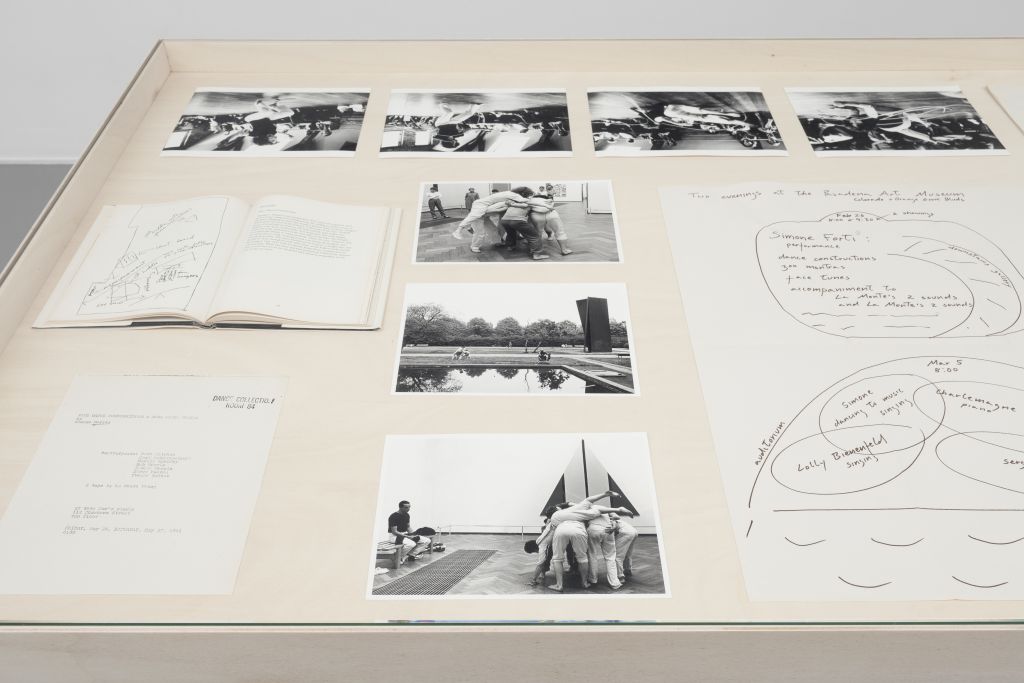
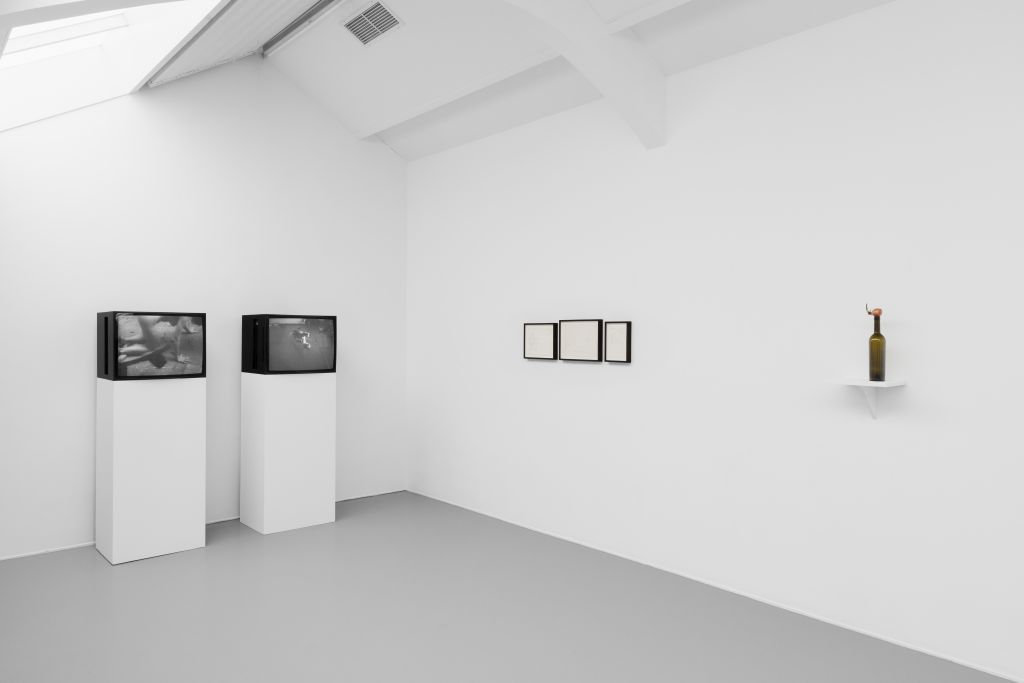
And the performances continue, with See Saw, Hangers and Rollers. All of them focusing on bodily interactions, different lines drawn by bodies, movement and props. The tempo, rhythm and atmosphere changes from one part of the evening to the other. The rendition of the Dance Constructions has a circular structure and comes to a conclusion with the retaking of the first exercise.
The overall effect of the sequence of performances on the audience, or at least on me, can maybe best be described in the words Forti used to tell her experience of Woodstock 1969: ‘It seemed like a tuning, a finding of certain forces, an overlapping of the body into certain bouncingness which matter can get into. […] I perceived a set of mores regarding the sharing of space and fate, which seemed to form a whole integrated way. I fell in love with that way and I remained with it for a year.’
The same goes for me. This love will last a while.
Simone Forti
Here It Comes
Vleeshal Markt & Zusterstraat, Middelburg
31.1 – 3.4.2016
All images Copyright: Simone Forti Courtesy: Vleeshal, Middelburg Foto / Photo: Gunnar Meier Photography
MORE ON THE ISSUE IN METROPOLIS M No 1 2016 HET EVENT. OUT NOW. ORDER [email protected] (€9,95)
Emma I. Panza


